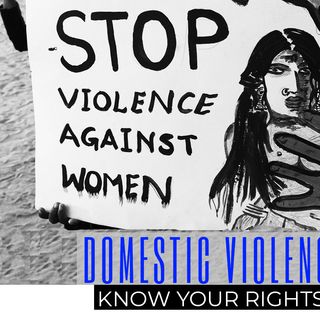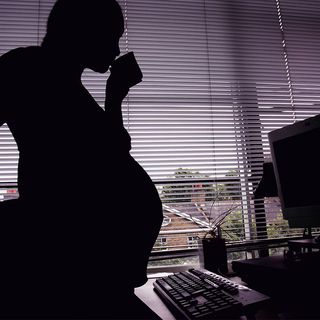
WHO Study: 42% of Women Face Physical, Verbal Abuse, Neglect During Childbirth
Researchers found forceful downward abdominal pressure and slapping to be the most common form of physical abuse women faced during childbirth.

One-third of women in four low-income countries in Asia and Africa face abuse and mistreatment during childbirth in health facilities, according to a new World Health Organisation-led (WHO) study. The abuse meted out to women, as documented by the study, included forceful downward abdominal pressure, slapping, punching, being shouted at and scolded, being forcefully held down, non-consensual vaginal and other examinations, and even non-consensual Cesarean sections and episiotomies (surgical cuts to the vagina) — often without a painkiller.
In a press release, Dr. Meghan Bohren said addressing these inequalities and promoting respectful maternity care for all women is critical to improving health equity and quality. “All women have the right to dignified, respectful healthcare throughout pregnancy and childbirth, as well as freedom from violence and discrimination,” she said.
Published in The Lancet, and led by WHO and Dr. Bohren from the University of Melbourne, the study involved independent researchers observing 2,016 women throughout their labor and childbirth, and for two hours post-partum, as well as surveying 2,672 women up to eight weeks after their child was born — in Ghana, Guinea, Myanmar, and Nigeria.
The findings of the study are … vile. Nearly 42% of all women observed experienced physical abuse, verbal abuse, and neglect stemming from stigma and discrimination; 35% of all women surveyed reported similar abuse.
Women were at the highest risk of physical and verbal abuse between 30 minutes before birth to 15 minutes after birth. They were nearly 12 times more likely to experience physical abuse, and seven times more likely to experience verbal abuse within 15 minutes before birth, compared to one hour before birth. The most common form of physical abuse was forceful downward abdominal pressure and slapping.
Related on The Swaddle:
Want to Know Your Rights During Labor and Delivery? Read This.
Younger, less educated women were found to be most at risk, pointing at glaring socio-economic inequalities in healthcare access during childbirth. Women aged 19 or younger were nearly twice as likely as older women to experience physical abuse; younger women with no education were four times more likely than older women to face verbal abuse.
Nearly 60% of all women did not consent to their first vaginal examination; younger, unmarried women were nearly five times more likely to undergo non-consentual vaginal examinations. Researchers observed — among the 2,016 women — that 13% of Cesarean sections and 75% of all episiotomies took place without consent. A similar pattern of medical procedures being conducted without consent emerged among the women surveyed — 11% of Cesarean sections, 56% of episiotomies, and 27% of induced labors were conducted without informed consent.
33.8% of the women observed were not given painkillers despite a direct request for it. 93.8% of them had no companion — partner, family, friends –present. Only 5% were asked about their preferred birth position. Of the 2,672 women surveyed, almost 60% were offered no pain relief. Nearly one-third of the women who explicitly asked for painkillers were denied, and close to half of them were not allowed to have a companion present with them.
Of the 2,016 women observed, 1,680 gave birth vaginally in a health facility. Of these, 40% had no access to oral fluids during and before labor and 5% gave birth in the complete absence of a health care provider. Among those women who were surveyed and who had vaginal births, nearly one-fifth did not have easy access to fluids and one-third were not allowed to eat food before labor.
“Our findings should be used to inform policies and programs to ensure that all women have a positive pregnancy and childbirth experiences and, are supported by empowered healthcare providers within well-functioning health systems,” Dr. Bohren said in the release, calling for further research, especially into drivers such as gender and social inequalities, and judgments about women’s sexuality. These are critical to understanding how institutional structures can be reorganized to improve women-centered care to efficiently deal with the dual issues of outright abuse and mistreatment due to a lack of resources and training as a form of abuse.
Related on The Swaddle:
Patient Feedback Could Improve Childbirth Experiences at Hospitals
In 2014, the WHO issued a statement on the prevention and elimination of disrespect and abuse during childbirth, positioning the issue as a violation of rights and trust between women and healthcare providers. Its 2018 recommendations on childbirth care echo Dr. Bohren’s conclusion: woman-centered maternity care is the only way out of the loathsome condition we have on our hands.
Previous reports have documented the physical abuse of Roma women in Eastern Europe and Latin American women. Following reports of the latter, Venezuela became the first country, in 2007, to adopt a law banning “obstetric violence.” In India, no such study has been done till now. While Evaluation reports commissioned by the National Health Mission consider the quality of hospital care in terms of infrastructure and cleanliness but do not address the behavioral aspect of care. A study by Population Council, an international research organization, acknowledges that it does not adequately capture the “bad behavior of the staff.” However, it is an open secret that mistreatment persists, especially among poor, uneducated women giving birth. Sohini Chattopadhyay, went undercover to Kolkata’s public hospitals to report on this abuse for Scroll. Her report — equal parts haunting and heart-breaking — includes several anecdotes of young women in labor being forcefully operated upon, roughed around, mocked and dismissed entirely, and confessions by doctors-in-training that slapping and the like are necessary tools to maintain decorum within the hospital. Chattopadhyay describes a scene where a thin, frightened girl is wheeled into a room, “moaning and rocking” as she gets on to the delivery table. The nurse present says — to the amusement of everyone, “Ahahaha, hair open and flying. She’s putting on a matinee show for us.”
As the girl keeps crying, the nurse says, “Yes, yes, go on crying, go louder. Then you will pakka have a girl.” Chattopadhyay reports that the girl shut up after the comment, “not because of the threat of a girl child … but because of that woman’s nastiness.”
Pallavi Prasad is The Swaddle's Features Editor. When she isn't fighting for gender justice and being righteous, you can find her dabbling in street and sports photography, reading philosophy, drowning in green tea, and procrastinating on doing the dishes.
Related


India’s Maternity Leave Law Currently Benefits Fewer Than 1% of All Women
